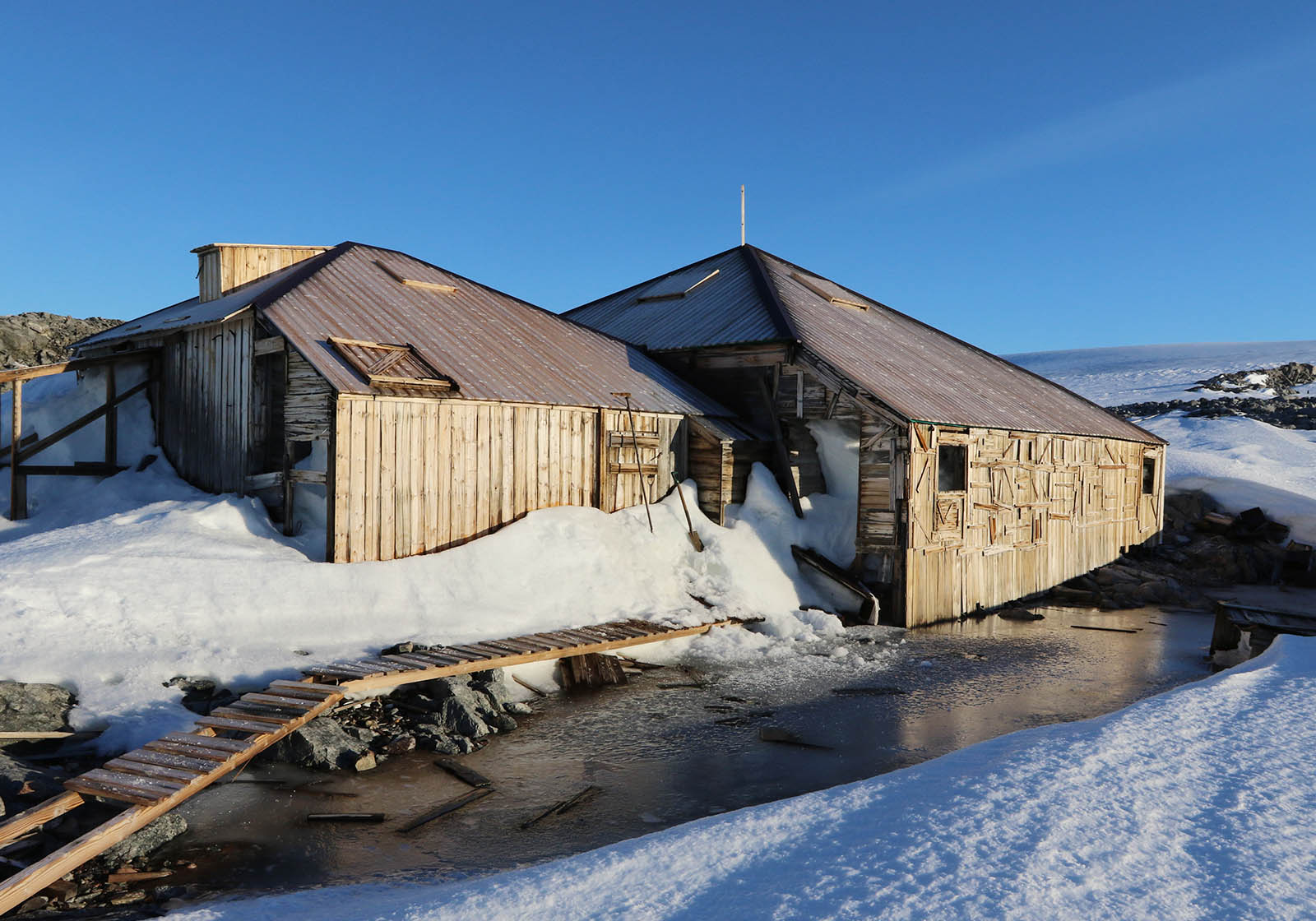An Historic Expedition
Overview
The Australasian Antarctic Expedition under Douglas Mawson – the pre-eminent scientific expedition of its time to South Polar regions – happened when Australia was little more than a decade old.
While other expeditions had started out from Australia in the 1890s, they had been financed and led from elsewhere. Here was an expedition planned, largely financed and led from Australia – an astonishing achievement for so young a nation.
East Antarctica – the greater mass of the Antarctic continent that lies south of Australia, the Indian Ocean and Africa – remained one of the least-visited parts of the continent throughout the early years of Antarctic exploration. The first two circumnavigations of Antarctica (James Cook in 1772-75 and Thaddeus Bellingshausen in 1819-20) both sailed well to the north of the pack ice in Australian longitudes. Around 1840, three voyages did much to fill the gap. In 1839 the English seal-hunter John Balleny, after discovering the islands named after him, sighted Antarctic coast south of Western Australia. A year later the French explorer Dumont d’Urville and the American Charles Wilkes came close to the coast.
Wilkes traversed 1,500km along the Antarctic coast, but a controversial homecoming and a court martial amid claims that he had made up his Antarctic discoveries meant that his accurate coastal maps were overlooked until well into the 20th century. In 1909, when a young South Australian geologist named Douglas Mawson returned from an Antarctic expedition under Ernest Shackleton, Adélie Land (as Dumont d’Urville had named the coast he discovered in 1840) was virgin territory – a gap Mawson was determined to fill. He began planning immediately for his own, Australian-based expedition, an unlikely prospect for so young a nation. But Mawson was not one to give up. He persuaded governments and private interests in Australia, New Zealand and Britain to pay for a stout whale-ship named Aurora, in which he sailed from Hobart (after a tumultuous farewell on the docks) in December 1911, bound for Macquarie Island and Antarctica.
Ever the innovator, Mawson set up a wireless relay station on Macquarie Island (which would later transmit the first Antarctic radio signals) before heading for unknown parts to the south. By the time he reached Cape Denison on 8 January 1912 Mawson was running out of options – he needed to be close enough to Macquarie for his radio signals and the ship (which still had to set up a second, western base) was getting low on fuel. So Cape Denison it was, at the western end of a great bay Mawson named for his country, Commonwealth Bay.
1911–14 Australasian Antarctic Expedition
In this age of satellite networks and global mapping it can be difficult to imagine that not so long ago, no-one was really sure what existed at Earth’s southern extremity. The first human sightings of a mysterious seventh continent were recorded in 1820, and no human actually set foot in Antarctica until as late as 1895. What did it look like? What was it made of? Who or what lived there? What could we learn from it?
To scientists such as Dr Douglas Mawson, the opportunity to research and discover this new world was unprecedented and irresistible. The objective of the Australasian Antarctic Expedition (AAE) was to investigate the “practically unknown Antarctic coast… west of the region visited by Scott and Shackleton.” Numerous studies were planned, with an emphasis on biology, geology, meteorology and magnetic charting for navigational purposes. The AAE aimed to identify new species, explore theories of continental drift and the geological connection of Australia and Antarctica, and examine glaciation and climate processes. The expedition would also conduct extensive surveys of the ocean and the seabed between Australia and Antarctica, and explore Macquarie Island, a similarly mysterious place some 1500km south-southeast of Tasmania, where a scientific base and wireless relay station would be built.

Conservation & Restoration
Since its establishment in 1996, the Foundation has funded and organised 14 major expeditions to the Mawson’s Huts historic site at Cape Denison. The expeditions have saved the main building from imploding and being blown into the Southern ocean, just 60 metres away.
Become involved and support our work
Help conserve Australia’s rich Antarctic heritage.
The Foundation is a not-for-profit charity seeking funds to promote and encourage public interest in the nation’s Antarctic history, including the conservation of Mawson’s Huts at Cape Denison, East Antarctica.
The Mawson’s Huts Foundation is a registered Deductible Gift Recipient with all monetary donations tax deductible.

